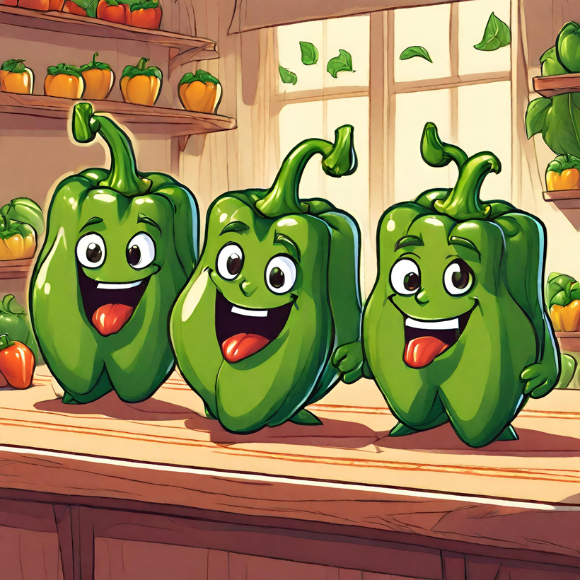Read by Michael Flamel

Ah, the bell pepper—that colorful, crunchy, and downright irresistible fruit that’s as versatile as it is delicious. From salads to stir-fries, soups to sauces, bell peppers have secured their place in kitchens and gardens worldwide. But hey, have you ever stopped to think about the fascinating journey these peppers take from seed to plate? Well, grab your gardening gloves and your appetite, because we’re about to take a lighthearted romp through the wonderful world of bell peppers!
Pepper Primer: A Colorful History
Bell peppers, scientifically known as Capsicum annuum, have been tantalizing taste buds for centuries. Originally hailing from Central and South America, these peppers made their way to Europe courtesy of Christopher Columbus, who, let’s be real, was probably just trying to jazz up his ship’s menu. Since then, bell peppers have become a kitchen staple, beloved by chefs and home cooks alike for their vibrant colors and sweet flavor.
Now, here’s a fun fact to impress your dinner guests: all green bell peppers are simply not ripe! That’s right—those green beauties you see in the supermarket are actually just baby peppers waiting to reach their full potential. Leave them on the vine a little longer, and you’ll be rewarded with a rainbow of hues—oranges, yellows, reds, and even purples! It’s a botanical fashion show in your garden.
From Garden to Table: Growing Bell Peppers with Gusto
So, you’re ready to dive into the world of bell-pepper cultivation? Excellent choice, my friend! Let’s start with the basics: soil, sun, and watering requirements. Bell peppers are the Goldilocks of the plant world—they prefer soil that’s not too acidic, not too alkaline, but just right. Aim for a pH range of 6.5 to 6.8, and don’t forget to pamper your peppers with some organic compost or aged manure. After all, a little TLC goes a long way in the garden!
Now, onto everyone’s favorite topic: sunshine! Bell peppers are sun worshippers, so be sure to plant them in a spot that gets at least 6-8 hours of direct sunlight per day. Think of it as a sunbathing session for your veggies—they’ll soak up those rays and reward you with a bountiful harvest.
And let’s not forget about hydration—after all, even peppers need their daily dose of H2O! Keep your bell peppers well-watered, but not waterlogged. Think of it like a delicate dance—you want to give them enough moisture to quench their thirst, but not so much that they drown. Mulching around your pepper plants can help retain moisture and keep those pesky weeds at bay—it’s like giving your veggies their own little spa day!
Seeing Red: The Paprika Phenomenon
Now, here’s where things really start to spice up—homemade paprika! If you’ve never experienced the sheer joy of grinding your own paprika from fresh red bell peppers, prepare to have your mind blown. Forget the store-bought stuff—once you’ve tasted the vibrant flavor and rich color of homemade paprika, there’s no going back. Simply harvest your ripe red peppers, dry them out, and then grind them into a fine powder. Voila—instant flavor explosion!
Check Out Our Complete Plant Profile!
If you’re itching to learn more about growing bell peppers (and let’s be honest, who isn’t?), be sure to check out the complete plant profile in our newest gardening guide: Vegetable Gardening in America. We’ve got all the juicy details on soil, sun, watering, and more—everything you need to grow bell peppers like a pro!
Join the Veggie Party: Gardening, Fairs, and Festivals Galore!
And hey, why stop at bell peppers? Our gardening guide is chock-full of tips and tricks for growing all your favorite veggies, from tomatoes to cucumbers, carrots to green beans. Plus, we’ve even thrown in a chapter on gardening fairs and festivals you can visit this Summer—because let’s face it, who doesn’t love a good veggie-themed party?
So, there you have it, folks—a lighthearted romp through the wonderful world of bell peppers. Whether you’re growing them in your garden or savoring them in your favorite dishes, one thing’s for sure: life is just a little bit sweeter with bell peppers around. So go ahead, embrace the pepper power—your taste buds will thank you!
Happy gardening and happy eating! ❖


 Previous
Previous


Never knew you could make your own paprika. Thanks for the great info